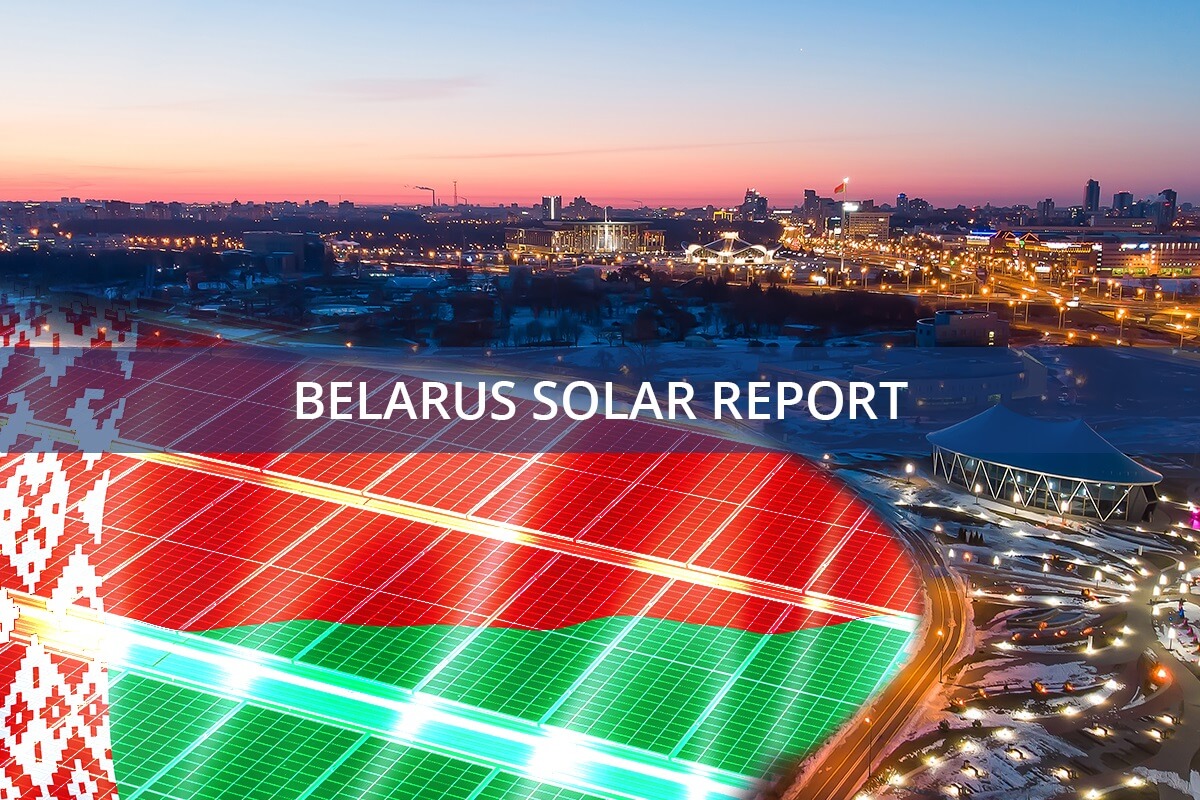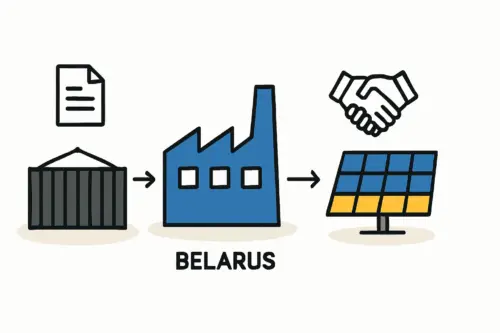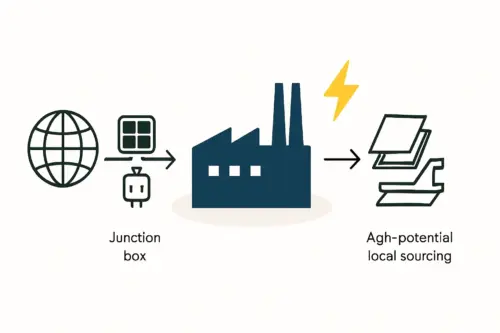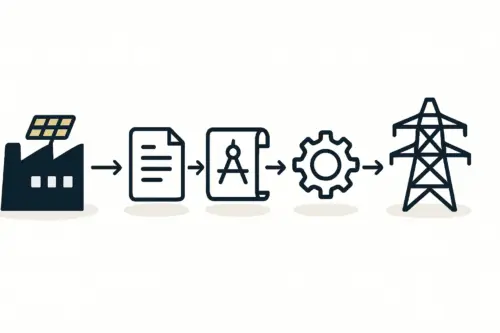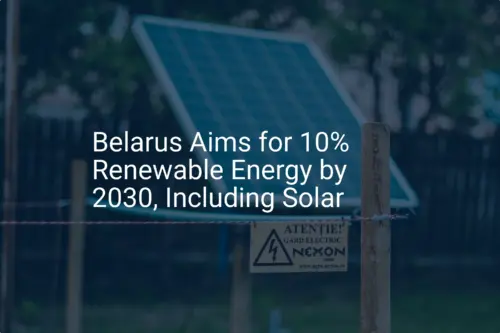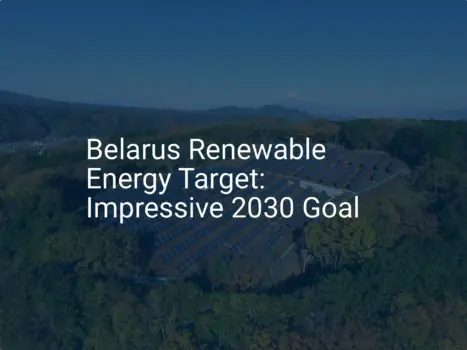Imagine a newly established solar module factory in Belarus, equipped with state-of-the-art machinery and capable of producing high-performance photovoltaic (PV) modules. Initial production runs are successful, and the quality is excellent. The management team identifies promising export opportunities in neighboring Kazakhstan and, further afield, in Germany.
However, as they begin discussions with potential distributors, they encounter a critical roadblock: certification. Despite their high quality, the modules cannot legally enter these markets without specific conformity marks.
This scenario highlights a common hurdle for new entrants in the solar manufacturing industry. While building the factory and perfecting the product are monumental tasks, understanding the regulatory landscape of your target markets is equally crucial for commercial success. For a manufacturer in Belarus, a strategic location at the crossroads of the Eurasian Economic Union (EAEU) and the European market presents a unique set of opportunities and challenges. This guide offers a clear overview of the essential certification pathways—primarily the EAC mark for the EAEU and the CE mark for Europe—and outlines a strategic approach to navigating this landscape.
Table of Contents
IEC Standards: The Global Foundation for Solar Module Quality
Before exploring regional certifications, it’s essential to understand the international bedrock on which they are built. The International Electrotechnical Commission (IEC) develops the global standards for most electrical and electronic technologies, including solar PV modules.
For solar panels, two standards are paramount:
- IEC 61215 (Terrestrial photovoltaic (PV) modules – Design qualification and type approval): This standard assesses a PV module’s performance by subjecting it to a series of tests that simulate long-term exposure to various climates—including thermal cycling, humidity freeze, and UV exposure—to ensure it will perform reliably over its expected lifetime.
- IEC 61730 (Photovoltaic (PV) module safety qualification): This standard concentrates on safety, outlining the requirements for construction and testing to protect against mechanical and electrical hazards like electric shock, fire, and personal injury.
Achieving compliance with these IEC standards is the first and most critical step. Most regional certifications, including EAC and CE, recognize and build upon test results from IEC 61215 and IEC 61730. A successful IEC testing program is therefore a prerequisite for gaining efficient access to multiple international markets.
Exporting to the EAEU: Understanding the EAC Mark
The Eurasian Conformity (EAC) mark is a mandatory certification for products sold within the Eurasian Economic Union, which includes Armenia, Belarus, Kazakhstan, Kyrgyzstan, and Russia. For a Belarusian manufacturer, this is the primary passport for accessing a large and integrated regional market.
What is the EAC Mark?
The EAC mark signifies that a product complies with all relevant Technical Regulations of the Eurasian Customs Union (TR CU). For solar modules, two key regulations typically apply:
- TR CU 004/2011 “On the safety of low-voltage equipment”: This is analogous to Europe’s Low Voltage Directive and covers electrical safety.
- TR CU 020/2011 “Electromagnetic compatibility of technical means” (EMC): This ensures the module does not interfere with other electronic devices and is not susceptible to interference itself.
Obtaining the EAC mark involves submitting a technical file, providing product samples for testing at an accredited EAEU laboratory, and, in some cases, undergoing a factory audit. This process is not a self-declaration and must be managed by a certification body accredited within the EAEU.
A key insight from J.v.G. turnkey projects: Businesses that integrate the requirements of these Technical Regulations into their initial solar module manufacturing process find the certification process significantly smoother. Designing for compliance from day one prevents costly redesigns and delays.
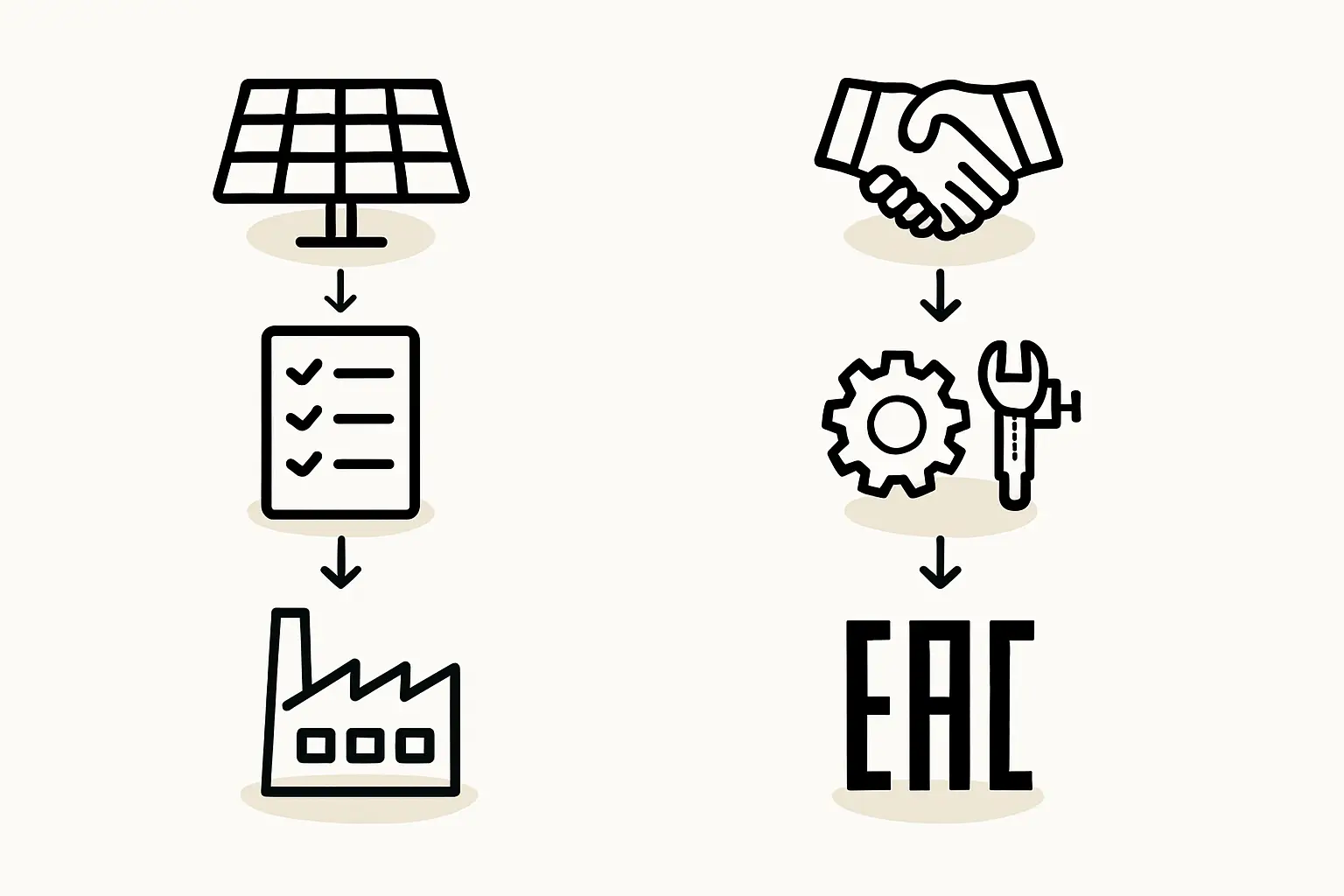
Entering the European Market: Securing the CE Mark
The Conformité Européenne (CE) mark is a mandatory requirement for products placed on the market within the European Economic Area (EEA), which includes all EU member states plus Iceland, Liechtenstein, and Norway. For a Belarusian producer, the CE mark unlocks access to one of the world’s most advanced and lucrative solar markets.
Understanding the CE Marking Process
Unlike the EAC mark, the CE mark is a manufacturer’s declaration. By affixing the CE mark, the manufacturer declares that the product meets all applicable EU directives. For solar modules, the relevant directives are primarily:
- Low Voltage Directive (LVD) 2014/35/EU: This covers health and safety risks from electrical equipment. Compliance is typically demonstrated through conformity with the harmonized safety standard EN IEC 61730.
- Electromagnetic Compatibility (EMC) Directive 2014/30/EU: This addresses electromagnetic interference.
- RoHS Directive 2011/65/EU (Restriction of Hazardous Substances): This restricts the use of specific hazardous materials in electrical and electronic products.
Although it is a self-declaration, the manufacturer must compile and maintain a comprehensive Technical File. This file must contain all evidence of conformity, including design drawings, risk assessments, a list of applied standards, and, crucially, test reports from a competent body proving compliance with standards like IEC 61730. Authorities can demand to see this file at any time.
A Strategic Approach to Certification for Belarusian Manufacturers
A common challenge for new producers is viewing certification as a final step. A more strategic approach treats it as an integral part of the business plan.
- Leverage IEC Testing for Dual Certification: Since both EAC and CE regulatory frameworks heavily reference IEC standards, a single, comprehensive testing program to IEC 61215 and IEC 61730 can provide the core technical evidence for both certifications. This is the most cost-effective and time-efficient strategy. By planning this from the start, a manufacturer can use a large portion of the same test data to apply for market access in both the EAEU and the EEA.
- The Importance of a Quality Bill of Materials (BOM): Certification is not a one-time event for a single product. It applies to a specific product family manufactured with a consistent set of materials. Any significant change to a key component—such as the type of solar cells, EVA encapsulant, or backsheet—can invalidate the certification. Maintaining a stable, high-quality bill of materials is therefore essential to maintain compliance.
- Time and Investment: Entrepreneurs should budget for certification as a key project milestone. Based on industry data, a full testing and certification cycle for IEC and CE/EAC can take six to 12 months. The costs, including testing fees and administrative processing, are a significant investment that must be factored into the initial business plan. A partner from a project in North Africa noted, “We underestimated the timeline for certification. Planning for it in parallel with our factory commissioning would have saved us nearly two quarters of lost revenue.”
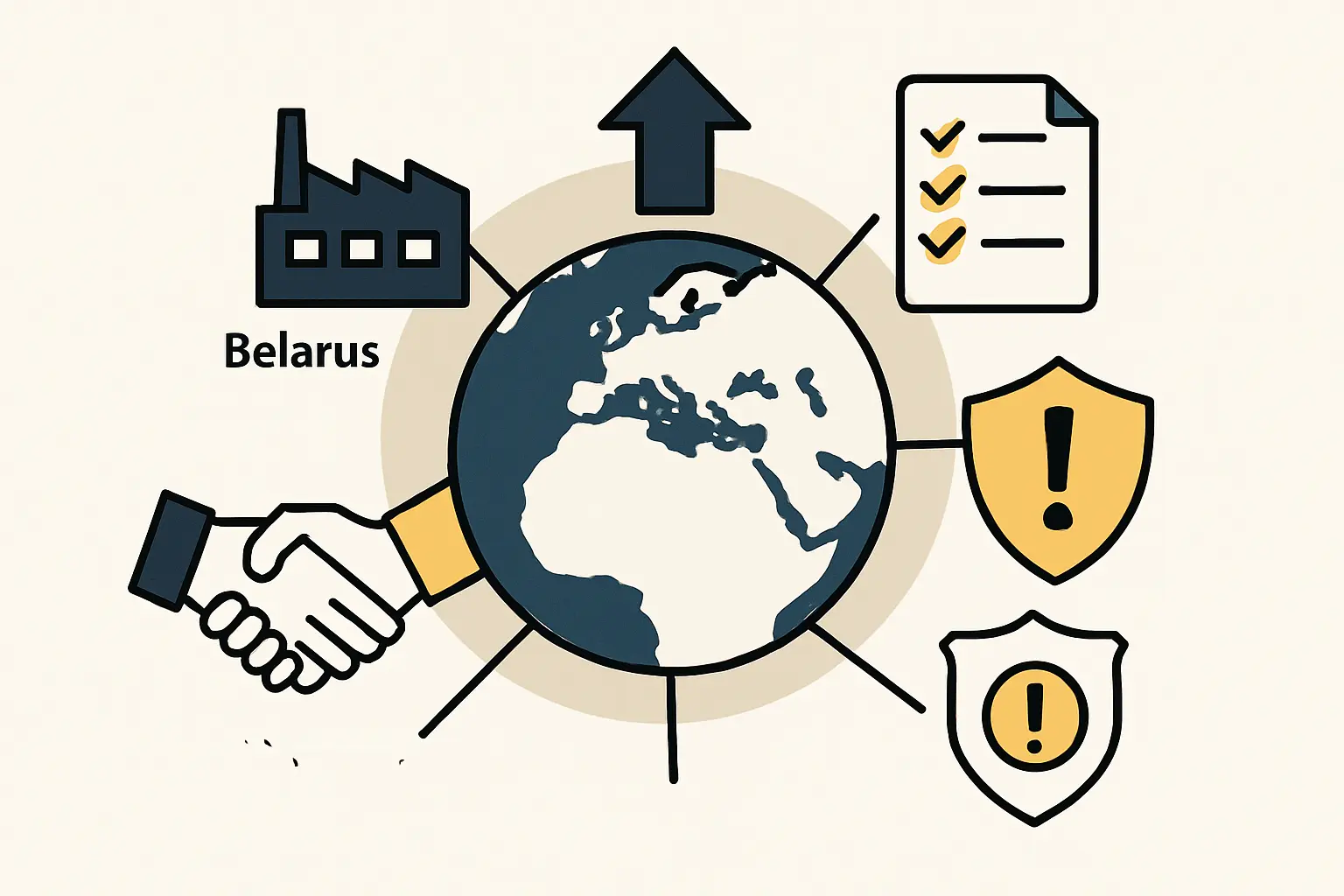
Your Solar Certification Questions Answered (FAQ)
Q: What is the main difference between the EAC and CE marks?
A: The EAC mark requires certification by an accredited body within the EAEU and is a mandatory third-party approval. The CE mark is a self-declaration by the manufacturer, who takes full responsibility for the product’s compliance, supported by a technical file and test reports.
Q: If my modules are tested to IEC standards, can I sell them anywhere?
A: No. IEC standards are the technical foundation, but they are not a market entry pass. You must obtain the specific mandatory mark for the region you wish to sell in, such as the EAC mark for the EAEU or the CE mark for the EEA.
Q: Can I conduct the testing for EAC and CE in Belarus?
A: For the CE mark, you can use any competent testing laboratory worldwide, as long as its reports are robust and demonstrate compliance with the harmonized standards. For the EAC mark, testing must generally be performed by a laboratory that is accredited within the EAEU system.
Q: How does certification impact my choice of manufacturing equipment?
A: Your solar module manufacturing equipment directly influences the quality and consistency of your final product. High-quality, reliable machinery ensures that every module produced meets the specifications of the certified “type.” This consistency is essential for maintaining the validity of your certification over time.
Conclusion:
Successfully navigating the world of certification requires a strategic mindset. This is not merely a technical requirement, but a business enabler that unlocks access to profitable international markets. For a manufacturer in Belarus, a dual-certification strategy focused on EAC and CE marks, built on a strong foundation of IEC compliance, offers a powerful path to growth.
By integrating these regulatory requirements into the earliest stages of planning, a new solar enterprise can avoid costly delays and position itself as a trusted, quality-conscious producer on the world stage. The journey from a factory floor in Minsk to rooftops in Munich or Moscow is paved with these critical marks of conformity and trust.

